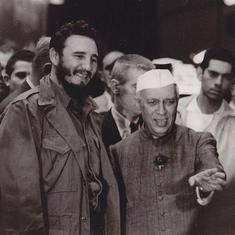All racing cars including stock, rally or Formula 1 cars are specially built to push the limits of achievable speed. F1 cars can accelerate to 90 km/h in less than two seconds and touch top speeds of over 320 km/h. Stock cars also typically achieve over 300 km/h. So what makes these cars go so fast? A powerful engine is combined with several other components that are relentlessly optimized to contribute to the vehicle’s speed. All these components can be grouped under four crucial elements:
Aerodynamics
The fastest cars are the most aerodynamic. A sleek, streamlined design is a head-turner, but its primary function is to limit wind resistance against the vehicle. If a car is built to cut through the wind rather than push against it, it will travel faster and also use less fuel in the process. To further improve the aerodynamic quality of the car, everything from the wheel arcs and lights to the door handles and side mirrors are integrated into the overall structure to reduce the drag - the friction and resistance of the wind. For some varieties of race cars, automobile designers also reduce the shape and size of the car rear by designing the back of the car so that it tapers. This design innovation is called a lift-back or Kammback. Since aerodynamics is crucial to the speed of cars, many sports cars are even tested in wind tunnels
Power
All race car engines are designed to provide more horsepower to the car and propel it further, faster. The engines are designed with carburetors to allow more air and fuel to flow into them. Many sports and racing cars also have a dual-shift gear system that allows drivers to change gears faster. The shift time—or the brief time interval between gear changes when power delivery is momentarily interrupted—can be as little as 8 milliseconds with this gear system. Faster gear shifts enable the car to travel at their fastest possible speeds in shorter times.
Control
The ability to turn corners at higher speeds is crucial while racing and racing cars are often designed so that their floors are flat to maximize the downforce. Downforce is a downwards thrust that is created in a vehicle when it is in motion. This force exerts more pressure on the tyres increasing their grip on the road, and thereby enabling the car to travel faster through corners. The downforce can be so strong that at around 175 km/h, even if the road surface were turned upside down, the car would stick to the surface. Many racing cars like the Volkswagen Polo R WRC are even equipped with a large rear wing that helps generate extra downforce.

Weight
The total weight of the car and its distribution is a critical part of race car design. All race cars are made of durable but extremely light material that reduces the weight of the vehicle. Every part of the vehicle is evaluated and components that are not strictly required in the race car—such as trunks or back seats—are eliminated. The weight distribution in these cars is carefully calibrated since at high speeds it proves crucial to car control. As a result, almost all racing cars have an RMR configuration or a Rear Mid-engine, Rear-wheel-drive layout where the engine is situated at around the middle of the car (but closer to the rear than the front), just behind the passenger compartment. This layout where the car is a little heavier towards the rear than the front allows for better control of the car at high speeds.
Only the most cutting edge technology is used to develop modern race cars and as a result, they are normally far more expensive to buy and more difficult to maintain than regular ones. But your dream of owning a race car does not need to remain a dream. The Volkswagen GTI, part of the award-winning VW GTI family, is now coming to India. Since 1979, these sporty and powerful cars have been dominating roads and rally race tracks.

With a sleek aerodynamic build, a great power-to-weight ratio and 7-speed dual-shift gears, the Volkswagen GTI is the most accessible race car experience available in India. Packed with 189 bhp/ 192 PS, the car is capable of doing 0-100 km/h in just 7.2 seconds and boasts a top speed of 233 km/h. And though the car is built to be quick and powerful, it is also strong on fuel economy with an outstanding mileage of 16.34 km/l. To experience what it is like to drive a race car, book a test drive now.
This article was produced by the Scroll marketing team on behalf of Volkswagen and not by the Scroll editorial team.










